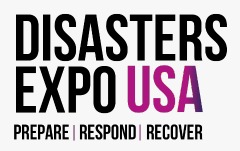How Canada is Revolutionizing Digital Governance

The Canadian government is changing how we think of traditional Web management. They built a platform of standards-compliant (HTML5, WCAG and WAI-ARIA), accessible and secure components that its agencies (and even provincial and municipalities) can use to build and maintain their sites. They are also focused on optimizing for mobile devices and improving usability and interoperability through their platform. Paul Jackson, project lead and one of the lead developers for Canada’s Web Experience Toolkit, or WET, shared details about the toolkit and how anyone can get involved, during a DigitalGov University webinar, April 17.
What is WET?
The framework for the toolkit was created in 2009, when Paul and his co-workers from the Treasury Board of Canada Secretariat (Canada’s counterpart to OMB) were doing their accessibility assessments and realized other departments were having problems developing websites that meet these requirements. Even when they explained how to fix the problems, they kept seeing similar errors caused by inconsistent interpretations of requirements and limited expertise and resources spread over 100+ departments. It wasn’t until they started providing snippets and templates that they found success, so they decided to pull the solutions into one place that can be repurposed. And the fellow departments found out quickly that it was less costly to work from a common set of tools that had been vetted and met their needs rather than developing the same solutions hundreds of times individually. Recently over 50% of Government of Canada websites are built with WET and the number is increasing every month.
The WET has evolved into a robust set of free, open-source and reusable components that allow agencies to:
- Customize the look and feel
- Support multiple languages like Chinese and Arabic, and
- Ensure accessibility, usability and interoperability of their websites
For example, the City of Ottawa, has an entirely different design than the Government of Canada’s site, because they were able to turn on and off certain components.
How can I get involved?
As they have just started the planning process for version 4.0 of the toolkit, which will focus on a mobile-first approach, Paul encourages anyone who wants to contribute to join in on the GitHub Issue Tracker to discuss, design, develop and test new components, enhancements and fixes. You can also check out working examples for each of the WET components as well as the WET wiki for documentation, including feature guides, getting started information and how to implement WET on your site. To help make the WET even better, they welcome pull requests and for people to contribute modules. As Paul said, “the more people that want to get involved, the better.”
Missed the webinar? You can view the recording below.
[youtube https://www.youtube.com/watch?v=zBLxKcLIIWg]
Our team at Inergency is excited to announce our partnership with @Disasters Expo Europe, the leading event in disaster management.
Join us on the 15th &16th of May at the Messe Frankfurt to explore the latest solutions shaping disaster preparation, response and recovery.
To all our members, followers, and subscribers in the industry, This is YOUR opportunity to explore the intersection of sustainability and disaster management, connect with industry leaders, and stay at the forefront of emergency preparedness.
Don't miss out! Secure your complimentary tickets now and be part of the conversation driving innovation in disaster resilience. ➡️ https://lnkd.in/dNuzyQEh
And in case you missed it, here is our ultimate road trip playlist is the perfect mix of podcasts, and hidden gems that will keep you energized for the entire journey



